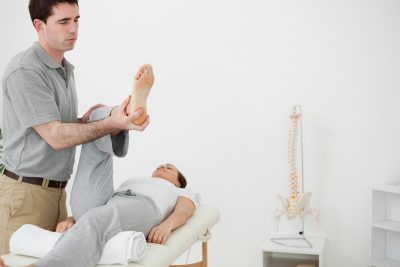Chronic Pain Management
Although clinics, such as the Lloyd’s Wellbeing Centre, are now open to provide physiotherapy and osteopathy, many of you are still working from home and therefore may find these services difficult to access. During this time of restricted working practices, people still need advice and help with managing pain, in particular, chronic pain management.
Long-term pain, often called chronic pain, is difficult to treat at the best of times. However, help is available during this period through online consultations (see the remote workstation assessment service offered by our sister company, Thrive4Life) and advice from practitioners, as well as articles and blogs regarding health and wellbeing.
This article aims to highlight the complexity of chronic pain, and how a broader view of such pain can help open up avenues that may have not been explored before, in relation to self-managing it.
What is pain?
According to the International Association for the Study of Pain (IASP) pain is “an unpleasant sensory and emotional experience associated with actual or potential tissue damage, or described in terms of such damage”. However, it is also a culturally-defined physiological and psychological experience, so everyone experiences pain differently.
Pain is a universal human experience that is produced by the brain 100% of the time. This includes all pain, no matter how it feels (sharp, dull, mild or strong), and no matter how long it has been present.

Lower back pain is very common. In fact it’s estimated that 8 in every 10 people in the UK are affected by back pain at some point in their lives.
Acute vs chronic pain
If pain is present for a few weeks or a couple of months, it is referred to as acute pain, and is commonly associated with tissue damage, such as from a low back injury or an ankle sprain, etc. With this type of injury you are generally encouraged to stay active and gradually return to normal activities (including work).
Chronic pain suffers are more likely to have had pain for three months or more. In this type of pain tissue damage is NOT the main issue! Those who find themselves in this position, are unfortunately, too often not informed how best to deal with it.
Why does pain persist?
Pain lasting more than six months, and not due to serious underlying pathology, is more than likely being produced by the brain. What we are certainly NOT saying here is that the pain is ‘in your head’, as sadly many patients are told by some health professionals. But often this persistent pain exists long after the body tissues are healed.
On-going pain being produced by the brain is less about structural changes in the body, and is more about the sensitivity of the nervous system. Therefore, chronic pain is so much more complex!
Is there any hope?
As complex as chronic pain is, there are things that can be done to help. One such way is to try and retrain the brain and the nervous system. Firstly, taking medication CAN help, but often only to a limited extent. More active approaches are usually needed to retrain the brain. It’s helpful to address how ones thoughts and emotions are affecting the nervous system.

Osteopaths or physiotherapists are able to assist their patients with chronic pain management.
Thoughts on pain management
Pain impacts on people’s lives, affecting mood and stress levels. All these thoughts and beliefs are basically brain impulses, however, you can learn to reduce stress and ‘wind down’ your nervous system. This can help with emotional wellbeing, and consequently reduce pain. Another thing to consider is diet and lifestyle – our modern lifestyle may not be so good for us! In fact what we eat and how we live, may significantly contribute to a sensitised nervous system.
There is also huge value in exploring the deeper meaning of pain, and ones surrounding personal story. Stepping back and looking at all the things that were happening around the time of the pain onset can be useful. This includes self-evaluation of your social situation, family dynamics, and job situation at that time. This can allow useful links to be made between the pain and life events.
Last, and by no means least, there is physical activity and function. From the brain’s perspective, moving at comfortable levels, without fear, and where the brain does not ‘protect’ by sending pain signals is best. Yoga and mindfulness based activities can be useful. This way one can gradually restore the body’s tissues to a healthier state.
In summary
- Pain comes from the brain and it can be retrained!
- By looking at your pain experience from a ‘whole person’ perspective it offers opportunities to begin making steps forward towards retraining the brain and reducing the pain.
- Using a combination of treatment approaches may help ‘wind down’ your ‘over excited’ nervous system and help calm your persistent pain.








